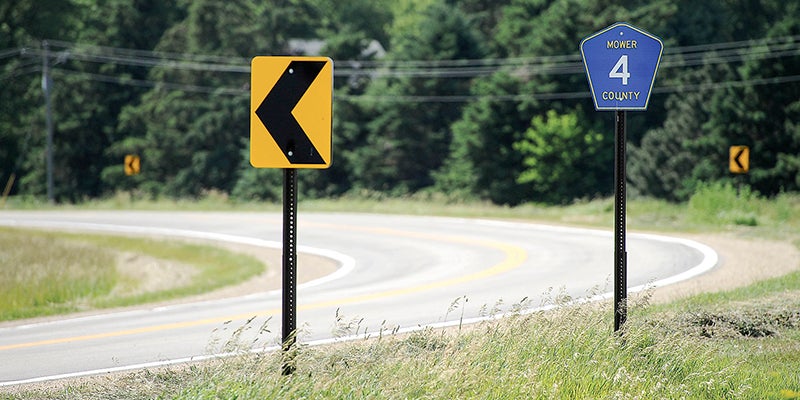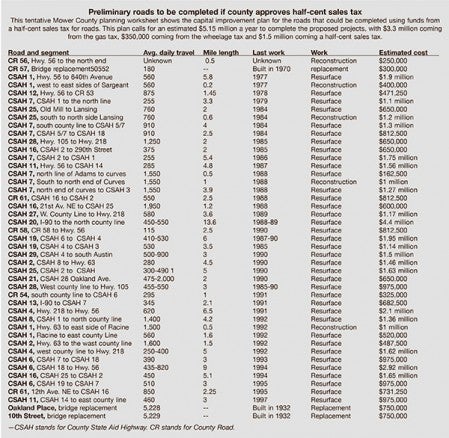County outlines potential projects for sales tax
Published 2:32 pm Sunday, June 19, 2016

- County Road 4 is one of the roads that could possibly see the effects if a half-cent sales tax is enacted by the Mower County Commission. Eric Johnson/photodesk@austindailyherald.com
The Mower County board has a tentative picture of the work that could be completed with the help of a half-cent sales tax dedicated to road and bridge projects.
Last week, Public Works Director Mike Hanson outlined a tentative list of more than 40 projects that would be done over the next 10 years with the help of the sales tax dollars, should the board eventually vote to approve the tax.
The roads and bridges included in the tentative list are ones that haven’t been reconstructed in several years, and the projects could be completed at anytime over the 10 years of the sales tax. The roads are also ones that are highly traveled in the county.
“The whole thing is heavy on looking at the traffic volumes,” Hanson said. “The roads that are used would be getting the most attention.”
The board has been discussing how to address a roughly $100 million need for road and bridge projects over the next decade and an estimated funding shortfall of $6.5 million per year.
 If the board votes to enact the half-cent sales tax, it would slim the county’s projected annual funding shortfall to $5 million a year, but it wouldn’t completely eliminate funding shortfalls.
If the board votes to enact the half-cent sales tax, it would slim the county’s projected annual funding shortfall to $5 million a year, but it wouldn’t completely eliminate funding shortfalls.
The projects outlined in Hanson’s preliminary report wouldn’t exclusively use money from the sales tax. Hanson estimated the county would need about $5.15 million a year to complete the proposed projects, with $3.3 million coming from the gas tax, $350,000 coming from the wheelage tax and $1.5 million coming the half-cent sales tax.
County staff noted even approving the sales tax won’t completely fix the county’s road issues. It’ll just address about $1.5 million of the more than $6.5 million projected annual shortfall.
County Coordinator Craig Oscarson recommended county staff make an additional list denoting the road projects that wouldn’t get done without the inclusion of the half-cent sales tax.
“[Then] you kind of know for your constituents, absent the sales tax which projects will not get done [in] the next 10 years,” Oscarson said. “I think that’s important for you and your constituents.”
The list could also change if board members want to add or remove projects from the list, Hanson noted.
He noted the costs estimates of the projects and other details included in the list presented to the board are preliminary estimations and could change.
The board will host public hearings, likely in July, to discuss to sales tax before it votes to approve or reject the tax in August or early September. If approved, the sales tax would be implemented in January 2017.

